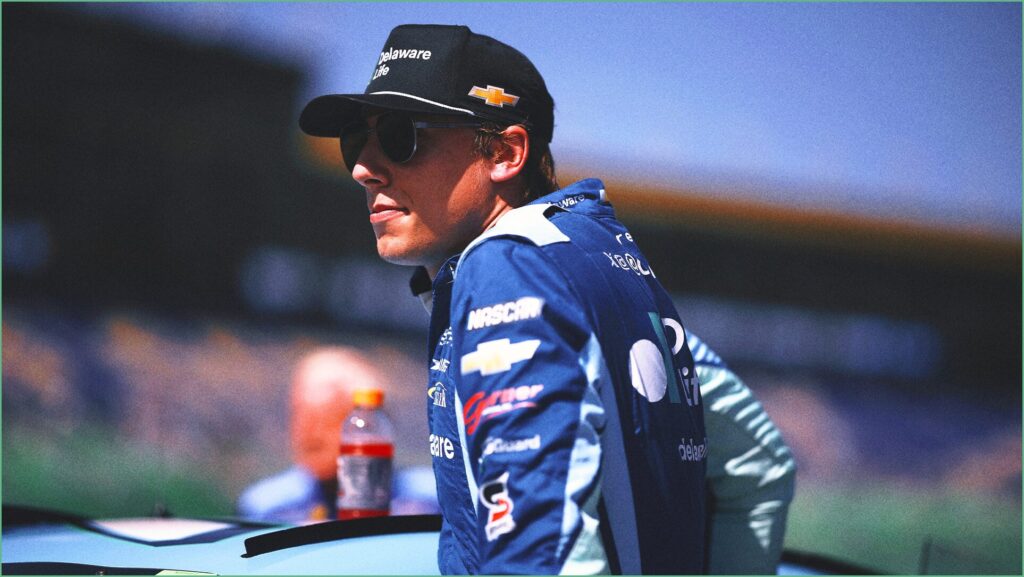Carson Hocevar Fined $50,000 After Kansas Incident
NASCAR has fined Carson Hocevar $50,000 for endangering safety officials during the Cup Series race at Kansas Speedway. The penalty landed after a chaotic sequence late in the event that turned heads and raised questions about on-track conduct. Fans, teams, and officials all scrambled to make sense of what happened and what comes next.
Hocevar is a rising star in NASCAR, known for aggressive moves and a chip on his shoulder. That style has earned him attention, but this incident crossed a line that NASCAR felt it could not ignore. League discipline is a reminder that speed and spectacle still come with strict boundaries.
The on-track exchange involved a collision or near-collision with safety personnel, depending on which account you follow. Race control reviewed video, telemetry, and marshal reports before deciding to hand down the fine. NASCAR framed the penalty as necessary to protect the people who keep the racing going.
The situation unfolded in the closing laps when debris and track conditions required attention from the safety crew. Hocevar approached at racing speed while the cleanup was underway, a moment that made officials uneasy. The result was an immediate investigation and, ultimately, a significant monetary punishment.
Safety crews put themselves in harm’s way every weekend so drivers can race. When a driver jeopardizes that safety, it’s not just a rules issue, it’s a moral and practical one. NASCAR has to enforce rules that keep the marshals, medical teams, and tow crews out of harm’s way.
The fine signals that NASCAR is willing to use its wallet to influence behavior when necessary. For a young driver, $50,000 is a meaningful hit but not career-ending. More important may be the reputational cost and the potential for stricter consequences if behavior repeats.
Teams watch these rulings closely because they set precedent for future incidents. Drivers and crew chiefs recalibrate risk-reward calculations after a big penalty. The message from officials is clear: late-race heat does not excuse risking volunteer and crew safety.
Hocevar’s camp has options, from issuing an apology to appealing the fine to NASCAR’s appeals board. Public statements often shape the narrative almost as much as the official outcome. How Hocevar responds will influence fan sentiment and possibly future league treatments.
On tracks across the country, other drivers noticed the swift discipline and whisper campaigns started almost immediately. Some argued NASCAR is being too heavy-handed, while others said it was the only responsible move. That split illustrates how high emotions run in a sport built on split-second decisions.
Media outlets picked up the story fast, replaying video clips and dissecting radio chatter. That scrutiny amplifies the stakes for everyone involved. Every replay increases pressure on NASCAR to be consistent and transparent in its operations.
Race organizers emphasize that the integrity of the sport depends on safety protocols being obeyed. When those protocols are tested, officials must act to preserve the system. The Hocevar fine is a visible example of enforcement in real time.
For fans, the moment offered both drama and discomfort. Spectators love hard racing and bold moves, but most will tell you there is a line you do not cross. The consensus among many fans is that drivers must protect the people who serve the sport weekly.
Hocevar’s career will likely continue, but this chapter is a cautionary note. Drivers learn from penalties, and teams adjust strategies to avoid repeating mistakes. In a sport where margins are measured in inches, mental discipline matters as much as mechanical performance.
NASCAR’s communication surrounding the fine aimed to be firm but not punitive beyond reason. Officials underscored that the decision was about preserving safety norms rather than singling out a personality. Still, the size of the fine makes clear the seriousness with which NASCAR views the issue.
Some veteran drivers backed the decision, saying it protects everyone on the pit lane and the infield. Others called for more nuance, suggesting that context matters in split-second situations. The debate reveals the tension between human error and institutional responsibility in fast-moving sports.
Looking ahead, the incident could prompt procedural changes at tracks or within NASCAR’s rulebook. There is a pattern where high-profile incidents lead to updated protocols or clarified enforcement language. Whether we see rule tweaks or more explicit guidelines, safety will be the priority.
For sponsors and partners, occurrences like this create a brief reputational risk that requires careful handling. Teams will want to manage media and messaging to reassure stakeholders. Fans often forgive but also expect accountability when lines are crossed.
Ultimately, the fine is about deterrence and preserving a culture of respect for those who work at the track. Making mistakes is part of motorsport, but risking innocent people is not acceptable. NASCAR acted to make that distinction clear with a decisive monetary penalty.
The Kansas incident will be discussed at team meetings, in driver debriefs, and in the paddock for weeks. Lessons will be learned and, hopefully, applied. Safety crews deserve that protection, and the sport’s future depends on it.
